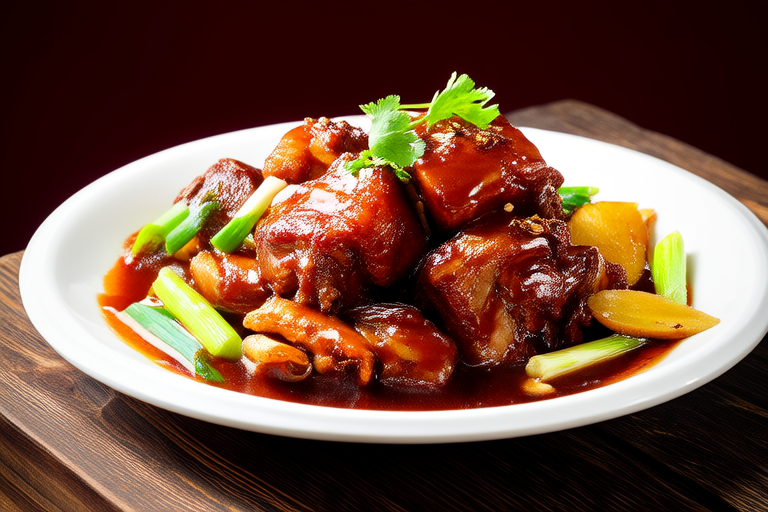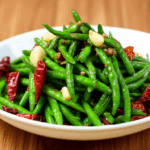Rich and Flavorful Braised Meat Feasts
Welcome to my culinary journey into the world of rich and flavorful braised meat feasts. In this article, I will guide you through the art of creating succulent, tender, and deeply flavored dishes that will elevate your dining experience. From traditional braising techniques to modern twists, we’ll explore how to achieve perfect results every time.
The Art of Braising
Braising is a cooking method that involves browning meat at high heat followed by slow cooking in liquid over low heat. This technique not only infuses the meat with flavor but also breaks down tough connective tissues, resulting in incredibly tender cuts. The key to successful braising lies in selecting the right cut of meat, using the appropriate amount of liquid, and allowing sufficient time for the flavors to meld together.
When choosing your meat, opt for tougher cuts like short ribs, brisket, or shoulder as they benefit most from the long, slow cooking process. These cuts contain more collagen, which transforms into gelatin during cooking, adding richness and body to the sauce. For best results, always start by searing the meat on all sides until it develops a deep brown crust. This step is crucial as it helps lock in moisture and enhances the flavor profile.
Once the meat has been browned, deglaze the pan with wine or broth to capture all those delicious caramelized bits. Then, add your choice of aromatic vegetables such as onions, carrots, and celery along with herbs and spices. Slowly cook these ingredients until they become soft and fragrant before incorporating them back into the pot with the meat.
Classic Recipes
Osso Buco
Osso buco, an Italian classic, features veal shanks cooked slowly in a savory tomato-based sauce. Begin by trimming excess fat from the shanks and seasoning them generously with salt and pepper. Heat olive oil in a large Dutch oven over medium-high heat and sear the shanks until golden brown on all sides.
Add sliced garlic, chopped onions, and carrots to the pot, sautéing until softened. Deglaze with dry white wine, scraping up any browned bits from the bottom of the pan. Stir in canned tomatoes, tomato paste, beef broth, bay leaves, thyme, and rosemary. Bring to a simmer, then nestle the shanks back into the pot.
Cover and transfer to a preheated 300°F (150°C) oven for about 2 hours, or until the meat is fork-tender. Serve osso buco over risotto or polenta, garnished with fresh parsley and grated Parmesan cheese.
Beef Short Ribs
Beef short ribs are another favorite for braising. Choose well-marbled cuts for maximum flavor and tenderness. Season the ribs with salt, pepper, and paprika, then sear them in batches until nicely browned. Remove the ribs and set aside while you sauté finely diced onions, carrots, and celery in the same pot.
Add garlic, ginger, star anise, cinnamon sticks, and cloves, stirring constantly until aromatic. Pour in soy sauce, oyster sauce, rice vinegar, and chicken stock, scraping up any browned bits. Return the ribs to the pot, ensuring they are fully submerged in the liquid. Cover tightly and cook at 300°F (150°C) for approximately 3 hours.
For added richness, blend some of the braising liquid with pureed vegetables and return it to the pot. Adjust seasoning with additional soy sauce if needed. Serve beef short ribs with steamed jasmine rice or noodles, accompanied by stir-fried greens.
Modern Twists
Moroccan-Style Lamb Shoulder
This Moroccan-inspired dish combines traditional spices with slow-cooked lamb shoulder for a truly unforgettable meal. Start by marinating the lamb shoulder in a mixture of olive oil, lemon juice, garlic, cumin, coriander, turmeric, and chili flakes overnight.
The next day, remove the lamb from the marinade and pat dry. Heat vegetable oil in a large skillet over medium-high heat and sear the lamb until browned on all sides. Transfer to a Dutch oven and add sliced onions, garlic, and ginger, sautéing until translucent.
Pour in canned tomatoes, tomato paste, beef broth, dried apricots, raisins, and prunes. Sprinkle with cinnamon, allspice, and cayenne pepper. Bring to a gentle simmer, cover, and cook at 300°F (150°C) for around 3 hours, or until the lamb is fork-tender. Garnish with toasted almonds and fresh cilantro before serving.
Japanese-Style Pork Belly
Pork belly braised in a soy-based sauce yields melt-in-your-mouth results. Start by scoring the skin of the pork belly without cutting through to the flesh. Season liberally with salt and pepper.
Heat a large skillet over medium heat and place the pork belly skin-side down. Cook for about 10 minutes, turning occasionally, until the skin is crispy and golden. Transfer the pork to a Dutch oven and pour in soy sauce, mirin, sake, sugar, garlic, ginger, and green onions.
Simmer gently for about 2 hours, or until the pork is tender. Remove the pork from the liquid and let it rest for 10 minutes before slicing thinly. Serve Japanese-style pork belly over steamed buns or alongside rice, topped with pickled vegetables.
Conclusion
Braising is an excellent way to transform tough cuts of meat into tender, flavorful dishes that can be enjoyed year-round. Whether you’re sticking to classic recipes or experimenting with modern twists, mastering this versatile cooking technique will undoubtedly enhance your culinary repertoire. Happy cooking!


